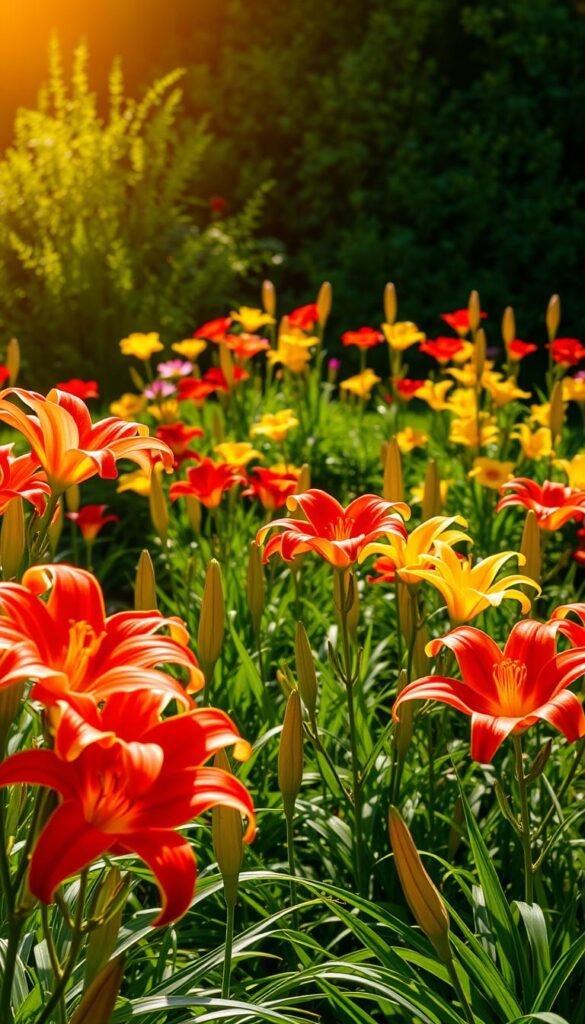Transform your outdoor space with versatile blooms that bring elegance and scent to your landscape. These iconic plants offer endless design possibilities, whether you’re framing walkways or creating focal points. Their dramatic petals and sweet aromas turn ordinary spaces into sensory retreats.
Discover varieties ranging from petite 12-inch stems to towering six-foot specimens. This flexibility lets you layer heights for dynamic visual interest. Imagine delicate borders edged with compact types, while majestic hybrids command attention at the center of your design.
The color spectrum spans crisp whites, sunny yellows, and fiery oranges to deep burgundies. Multi-toned options add artistic flair, blending seamlessly with existing plantings. Pair pastel types with lavender for a cottage vibe, or use bold reds alongside ornamental grasses for modern contrast.
Best of all, these perennials return yearly with minimal effort. Some stems produce over 20 blossoms, ensuring weeks of vibrant color. Strategically mix fragrant and non-scented types to balance sensory appeal throughout your space.
Understanding Lilies and Their Varieties
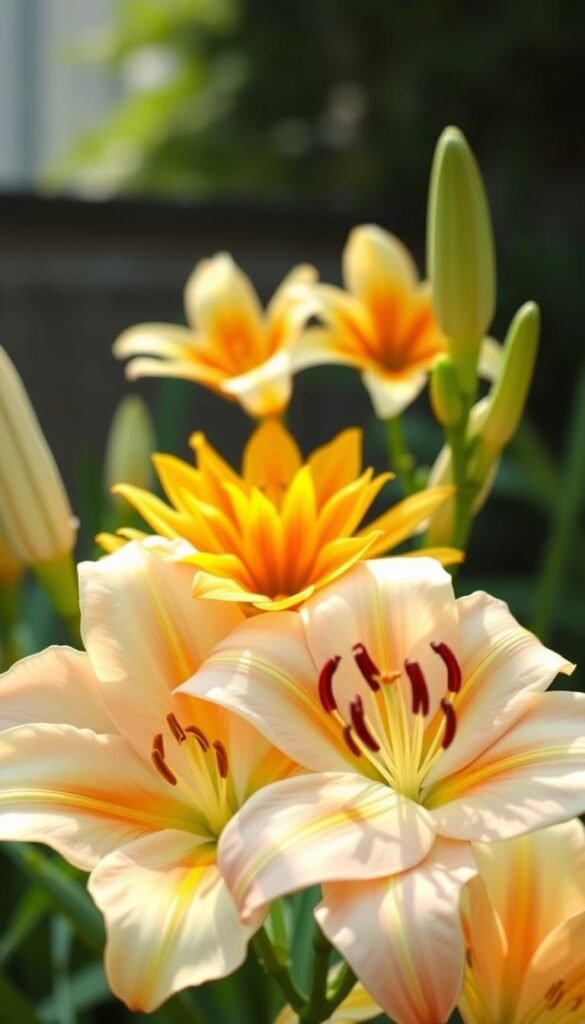
Not all plants called “lilies” are created equal. Knowing what sets them apart helps you make informed choices for your landscape. Let’s break down the key differences and standout options.
Exploring True Lilies vs. Imitation Varieties
True lilies belong to the Lilium genus and grow from scaly bulbs. Their iconic trumpet-shaped flowers develop on single stems. Daylilies, despite the name, sprout from fleshy roots and produce multiple flowering stems per plant.
Peace lilies and canna lilies also borrow the name but aren’t related. True varieties like Orientals and Asiatics offer more dramatic blooms. For lasting impact, focus on bulb-grown types rather than root-based imitators.
Popular Species and Hybrids to Consider
Tiger lilies (Lilium tigrinum) dazzle with orange-spotted petals. Oriental types release intense fragrances, while Asiatic lilies bloom earliest with minimal care. Hybrids like Orienpets combine trumpet lilies’ height with Oriental scents.
LA hybrids merge Easter lily hardiness with Oriental colors. North American native species adapt best to local climates. Mix early-blooming Asiatics with late-season Orientals for nonstop summer color.
Preparing the Perfect Site and Soil for Lilies
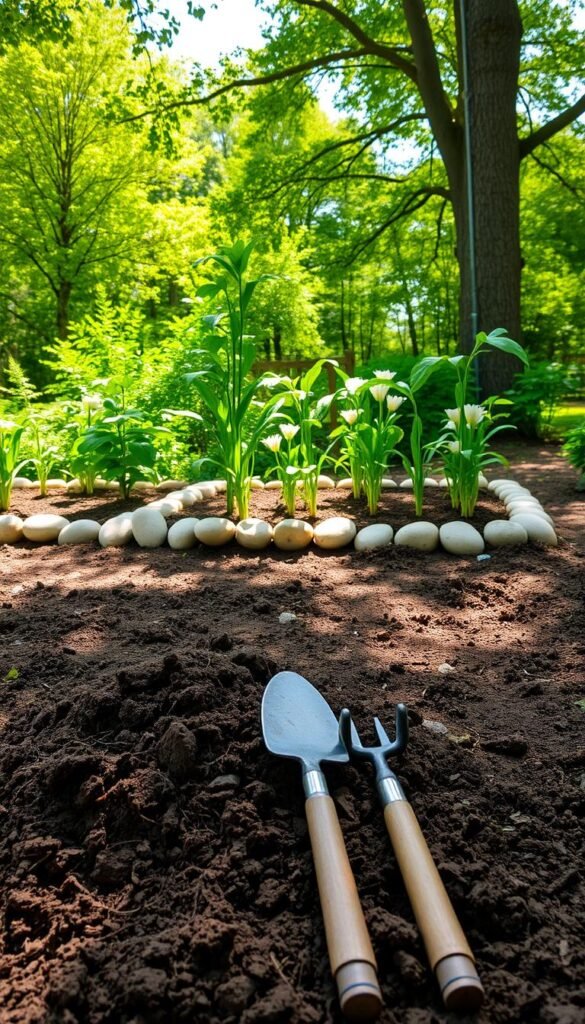
Your lilies’ success begins with choosing the right spot and soil. These plants demand specific conditions to thrive, but getting it right means years of breathtaking flowers with minimal upkeep.
Sunlight: Non-Negotiable Fuel for Growth
Six to eight hours of direct sunlight daily powers lily growth and flowering. Watch your yard through the day to identify sun-drenched areas. South-facing slopes or open spaces work best. In hot climates, afternoon shade helps protect blooms from scorching.
Drainage: Your Bulbs’ Lifeline
Test drainage after heavy rain. Areas drying fastest indicate ideal spots. For clay-heavy ground, build raised beds or mound soil 6-8 inches high. This prevents bulb rot caused by standing water.
| Amendment | Benefits | Best For |
|---|---|---|
| Compost | Boosts nutrients, improves texture | All soil types |
| Leaf Mold | Enhances moisture retention | Sandy soils |
| Well-Rotted Manure | Adds slow-release nutrients | Poor fertility areas |
Mix 3 inches of organic matter into the top 12 inches of soil. Most varieties prefer slightly acidic ground (pH 6-7). Test soil and add lime for Madonna types needing alkaline conditions. Space bulbs 8-12 inches apart to allow proper root development.
Planting Techniques and Seasonal Tips
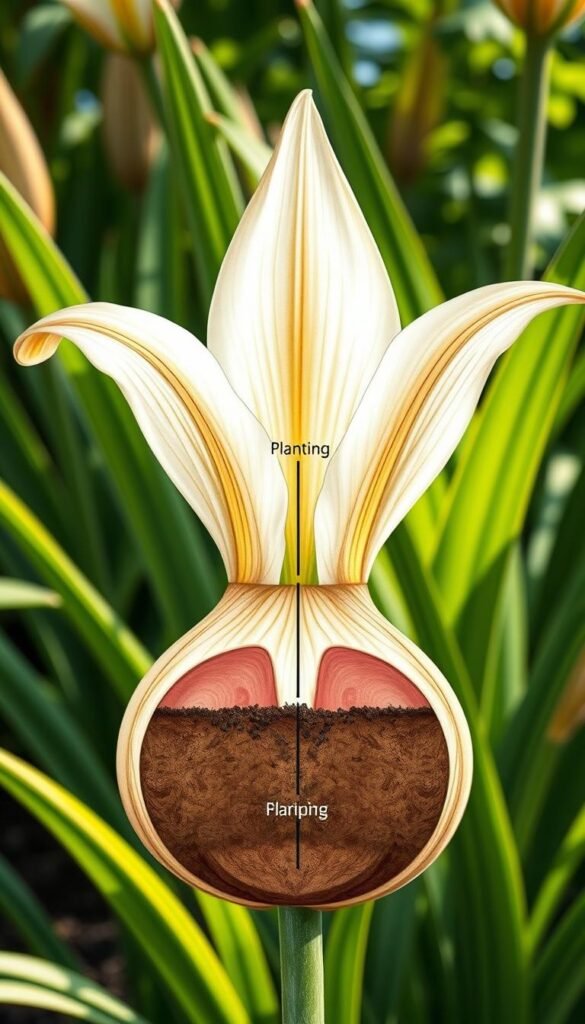
Getting your bulbs in the ground correctly makes all the difference between sparse stems and eye-catching clusters. Follow these proven methods to ensure vigorous growth and maximize your floral display.
Depth, Spacing, and Grouping Essentials
Dig holes three times deeper than your bulb’s height—typically 6 inches for most varieties. This protects against frost while letting stems form stabilizing roots. Always position the pointed end upward for proper growth.
| Bulb Size | Planting Depth | Spacing |
|---|---|---|
| Small (2″) | 6 inches | 8 inches |
| Medium (3″) | 9 inches | 12 inches |
| Large (4″) | 12 inches | 18 inches |
Cluster five or more bulbs together for bold visual impact. Space groups 2-3 feet apart to prevent overcrowding. Mix early and late-blooming types in the same cluster for extended color.
Spring vs Fall Planting Guide
Plant in spring after your last frost when soil warms to 55°F. Handle sprouted bulbs gently—damaged shoots won’t regrow. For fall installations, aim for 4-6 weeks before ground freezes to establish roots.
Source bulbs locally when possible and plant within a week. Unlike tulips or daffodils, these bulbs stay active year-round. Store unused ones in slightly damp peat moss if delays occur.
Lily Garden Ideas for Flower Beds: Fragrant and Showstopping Blooms
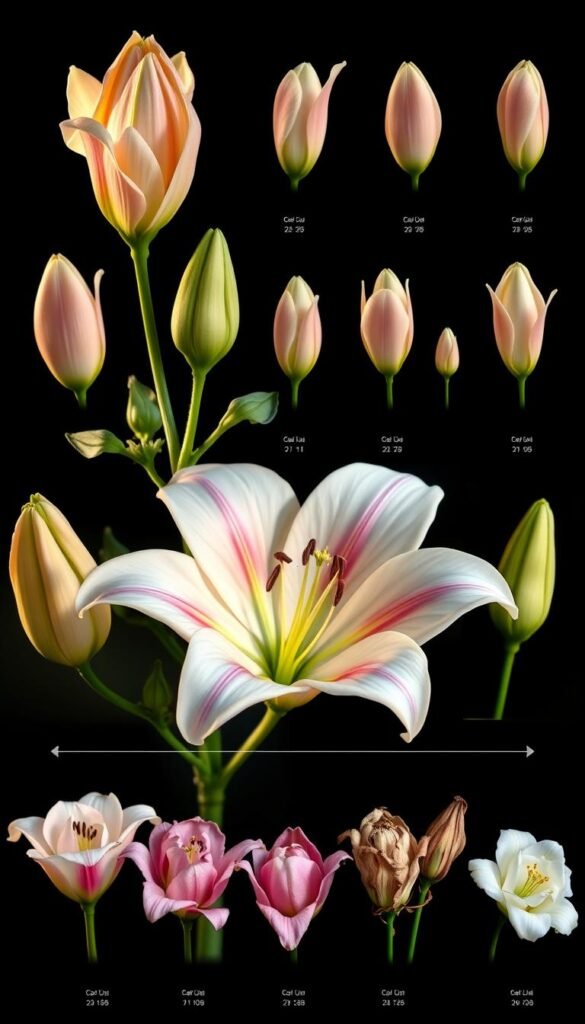
Transform your flower beds into a dynamic showcase that evolves through the seasons. By blending bloom times and fragrances, you’ll create visual drama and sensory delight from spring through fall.
Designing a Colorful and Fragrant Display
Start with bold Asiatic varieties in May and June. Their neon-bright colors pop against emerging greenery. Pair ‘Golden Splendor’ trumpet types with blue salvia for striking contrast when summer heat arrives.
Place fragrant oriental hybrids near seating areas. Their evening perfume intensifies as temperatures drop. White ‘Casa Blanca’ lilies glow under moonlight, while pink ‘Stargazer’ adds vertical drama to borders.
Mixing Varieties for Continuous Blooms
Stagger planting times across three categories:
| Variety | Bloom Period | Key Features |
|---|---|---|
| Asiatic | Late spring | Vivid colors, no scent |
| Trumpet | Mid-summer | 15 blooms/stalk, sweet fragrance |
| Oriental | Late summer | Dinner-plate blooms, intense aroma |
Combine early-blooming ‘Montreux’ (Asiatic) with mid-season ‘African Queen’ (trumpet). Add late-flowering ‘Muscadet’ (oriental) to extend the show into September. This sequence ensures fresh flowers for 4+ months.
Caring for Lilies and Managing Pests
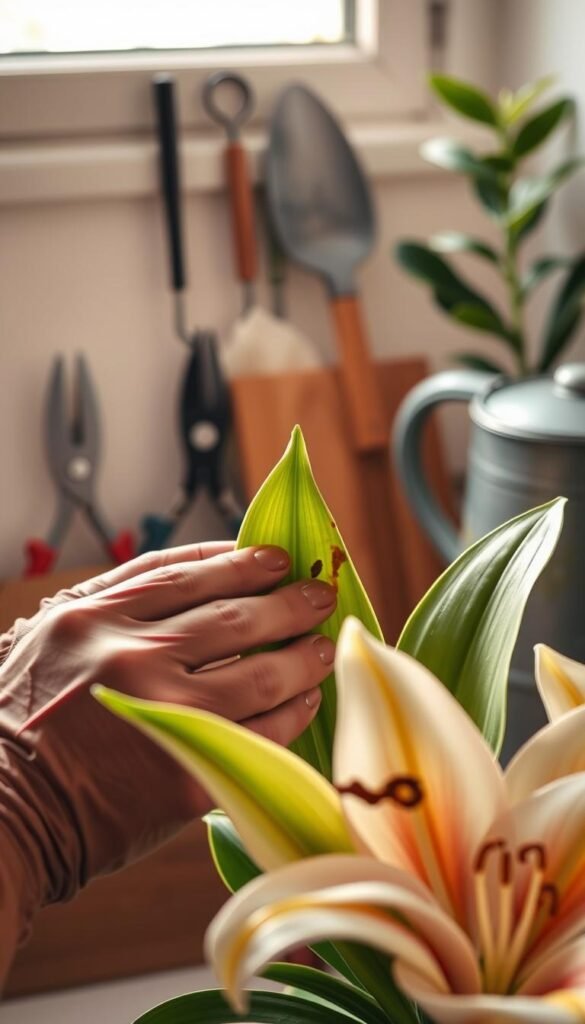
Keep your lily display thriving with smart maintenance and proactive pest control. Healthy plants reward you with stronger stems and longer-lasting blooms season after season.
Watering, Fertilizing, and Mulching Practices
Water deeply once a week, letting soil dry slightly between sessions. Use a moisture meter to avoid soggy conditions. Feed plants with 10-10-10 fertilizer when shoots emerge, then every 6 weeks until buds form.
Spread 3 inches of shredded bark mulch around stems. This locks in moisture and stops weeds. In winter, add extra mulch to protect bulbs from freezing temperatures.
Preventing Pests: Rabbits, Insects, and Slugs
Wrap chicken wire around new shoots to deter rabbits. Check leaves weekly for red lily beetles – handpick adults and spray larvae with neem oil. For slugs, set beer traps or sprinkle diatomaceous earth at plant bases.
After petals drop, snip flower stems but leave foliage intact. Let leaves gather sunlight until they yellow naturally. This energy storage ensures next year’s blooms reach their full height and vibrancy.
Your Path to a Blossoming Lily Garden
Embarking on your lily-growing journey unlocks endless possibilities. These versatile perennials reward your care with years of evolving beauty. Watch your efforts bloom into living masterpieces that grow more impressive each season.
You’ll find they thrive in unexpected places—containers brighten patios, while bold tiger lilies energize wildflower meadows. Their adaptability means success in formal borders or casual cottage plots. With minimal effort, clusters multiply, gifting you extra bulbs to expand displays or share.
Cut stems bring summer indoors while encouraging new buds outdoors. Experiment with rare varieties as your confidence grows. Each year deepens your connection to these resilient plants, turning simple gardening into a lifelong passion that blossoms alongside your creations.

